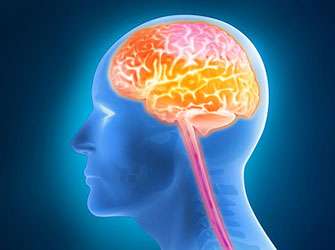Tumour network in the brain increases treatment resistance

Astrocytomas are special type of brain tumours that are difficult to treat, because they do not respond to standard therapies. One reason for this resistance could be their ability to form a communication network. This was discovered by scientists taking part in an international study involving experts from the Comprehensive Cancer Center (CCC) of MedUni Vienna and Vienna General Hospital. The study has now been published in the renowned specialist journal "Nature" and is regarded as a milestone by the medical world.
Gliomas are tumours of the central nervous system (brain tumours) and are subdivided into astrocytomas and oligodendrogliomas. Whilst oligodendrogliomas are relatively rare, with only 40 new cases every year, and respond well to standard radiotherapy and chemotherapy treatments, astrocytomas are highly invasive and difficult to treat. For this reason they are also associated with a poor prognosis: sufferers usually only survive for a few years. In Austria around 400 people develop an astrocytoma every year.
Until now it has not been understood why astrocytomas respond so poorly to current treatments compared with other gliomas. In the present study, which was set up in collaboration with the University of Heidelberg, the study team successfully identified a starting point that opens up the possibility of treating astrocytomas more effectively in future. Matthias Preusser, specialist in brain tumours at the University Department of Internal Medicine I at MedUni Vienna (www.onkologie-wien.at) and Vienna General Hospital, head of the CCC unit for tumours of the central nervous system (CCC-CNS) and co-author of the new study, in which the Clinical Institute for Neurology of MedUni Vienna and Vienna General Hospital also took part, says: "Astrocytomas form interconnecting communication networks. To do this, the tumour cells form long thin channels from their membranes, so-called tumour microtubules, that connect them to other tumour cells. They use these channels to exchange information and molecules in the form of electrical charges and calcium. This network favours the spread of tumour cells, cell division and makes astrocytomas more resistant to treatment." Indeed, using this network, astrocytomas are able to initiate repair mechanisms and so eliminate any damage to individual tumour cells caused, for example, by radiotherapy treatment.
New therapeutic approach: disrupting the network
One approach to achieving more therapeutic success in the future is to disrupt communication between the astrocytomas by blocking the channel system. Preusser: "It is conceivable that greater therapeutic success could be achieved by using drugs to disrupt the formation or function of the membrane channels." The research team was able to show that the network interfaces are created by a certain molecule, connexin 43, that is able to form pores. On the other hand, the protein GAP 43 seems to play an important role in the formation of the microtubules. Preusser: "Potential treatment strategies could therefore be to chemically inhibit the tumour cell network using calcium blockers or substances that affect connexin 43 or GAP 43."
More information: Matthias Osswald et al. Brain tumour cells interconnect to a functional and resistant network, Nature (2015). DOI: 10.1038/nature16071


















